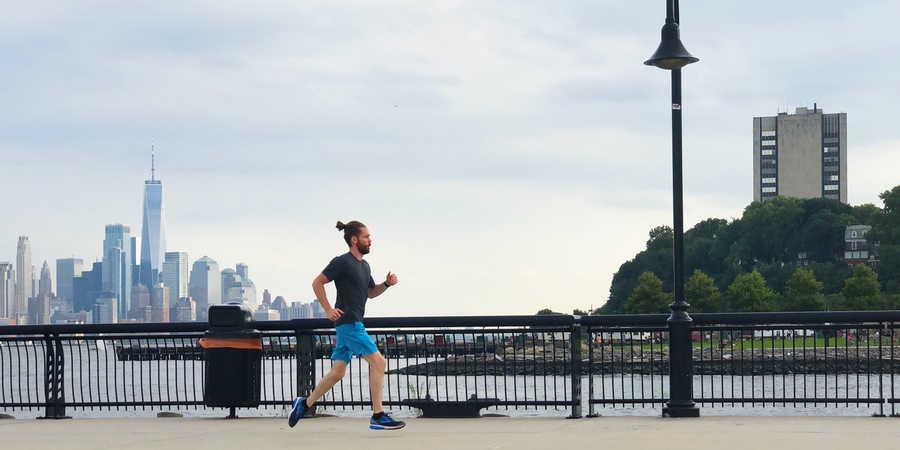
How to Take the First Step: Exercising When That’s Usually Not Your Thing
By Todd Williams*
THE GIST: Move more than you’re already moving. Add 10 minutes of exercise to your day (70 minutes a week!). Make it a new habit by tacking it to a habit you already have. And once you’ve gotten the hang of it in the first week, add five more minutes each day and be consistent. I’ve got a list of suggestions below for you.
THE LONGER READ: In graduate school, one of my professors opened his first lecture by saying, “If exercise was a pill, it would be the single greatest medication we could ever take.” That still resonates with me because I love the way exercising makes me feel. And that’s why I’m so excited to kick off STEPtember with you.
But if you don’t feel the same way — and if you feel daunted by this challenge — then this post is for you.
When approaching exercise, think about how to apply the least amount of stress to have the greatest results. If you apply too much stress too soon, you’re likely to injure yourself or burn yourself out. And if you don’t apply enough stress, you won’t be able to make progress toward your goals. The key is finding that happy medium.
For anyone, especially beginners, it’s important to reflect on how much you’re currently moving throughout the day. There are many fitness apps and lots of wearable gear to help track your movement. You can also track activities with a journal or a simple note to yourself about your daily exercise.
Once you establish your baseline, you can build from it and you’ll be more likely to find the right balance of stress versus rest.
A SIMPLE START: Start small — with 10 minutes of activity everyday. It doesn’t matter what you choose — just dedicate 10 minutes of your day to moving. Here are some ideas for daily 10-minute challenges that can you can adjust to your own fitness level.
- Walk continuously for 10 minutes at a good pace without rest breaks. These 10 minutes are extra — not movement that you’d usually do each day.
- Complete 20 squats, 10 lunges, and five push-ups for as many sets as you can with proper form in 10 minutes.
- Perform a 10-minute yoga flow.
- Run for one minute, then walk for one minute. Alternate this way for a total of 10 minutes.
- Propel yourself continuously in your wheelchair for 10 minutes without rest breaks.
- Complete 15 bridges, 15 side-lying hip abductions, 15 side-lying clam raises, and 15 prone leg extensions for as many sets as you can with proper form in 10 minutes.
- Perform 30 shoulder rolls, 15 seated chin tucks, 30 scapular reactions, and 15 shoulder external rotations for as many sets as you can with proper form in 10 minutes.
And if none of these are up your alley, there are lots of other great 10-minute workouts you can try. Just do a quick web search for “10-minute workout” and choose the exercise that works for you.
It’s hard to incorporate something you’ve never done much — or something you might not want to do. But it’s easier when you attach it to something you already do. For example, add the exercise to the middle of your morning (or afternoon or evening) routine to help make it stick. When you have a strategy to meet your goal and a way to review your progress, you’ll be more likely to achieve what you set out to do.
Our bodies are built to move and they’re quite adaptable, even within whatever limits we feel. But the more we move in the ways we can, the more our bodies will adapt to that movement. When you take at least 10 minutes each day to be more active, you’ll be giving yourself a real, lasting gift.
STEPtember to Remember: Blogging It Out is a series by Todd Williams, CPARF’s STEPtember Fitness Ambassador. Todd is a traveling physical therapist who’s training for the 2019 New York City Marathon — and he has cerebral palsy. The posts featured in this series showcase his personal perspective.
*This blog series doesn't constitute professional medical advice. Only you and your doctor know what's best for you, so please consult your doctor for medical advice. This blog series also shouldn't be read or construed to contain any medical advice or medical endorsement by Cerebral Palsy Alliance Research Foundation.
Tue 16 Jul 2024
By Kim Greene Season of Confirmation With his affirmative comment and now wondering if indeed I had a neurological issue, I googled what I knew about my history. I knew that I had been adopted and born eight weeks early and had to be kept in the hospital until I was stable and weighed more […]
Wed 10 Jul 2024
Cerebral Palsy Alliance Research Foundation (CPARF) and CVI Now (part of the CVI Center at Perkins School for the Blind) are hosting a joint event on Thursday, July 25 from 5:30 pm to 6:30 pm ET. Launching CPARF’s new “CP &…” series, the event will dive deep into the connections between cerebral palsy (CP) and […]



